Orchard Notes: February 2023
Prune Bloom 2023 | Orchard Considerations
Clarissa Reyes, North Sacramento Valley Orchard System Staff Research Associate
FEBRUARY
Bees: Order bees, usually a 1 hive/acre stocking rate. Employ best management practices for maintaining hive health. Before making fungicide application, check for bees nearby using the ‘Bee Check’ tool on the BeeWhereCalifornia app or website. For more information, contact your county’s ag commissioner’s office.
Irrigation Maintenance: The Sac Valley has a new mobile irrigation lab! Check your system’s distribution uniformity and perform maintenance prior to possible heat at bloom, as well as the coming irrigation season. Find more info about applying for a free system evaluation by visiting the links: if you farm in Tehama, Butte, Glenn and/or Shasta Counties or if you farm in Yolo, Sutter, Colusa, or Yuba.
Calibration: Calibrate your spray equipment prior to applying bloom disease sprays: replace nozzles, check spray filters and other worn parts.
San Jose Scale (SJS): Delayed dormant sprays are preferred timing for treatment, but if they were not applied or were unsuccessful, monitor with pheromone traps beginning in mid- to late February.
Chill: To date, chilling is roughly equal to or slightly better than the last six years at Durham and Verona CIMIS stations. Check your winter chill accumulation with this calculator.
Protect new trees: For both replants and new orchard plantings, protect trees from sunburn and herbicides with white interior latex paint diluted 2:1 water to paint, plus tree wraps. If tree wraps are used without painting trees, the boxes should be flattened (from the top) to avoid “wrapper burn.” (Viewed from above the tree, the flattened box should look like this ◊, not like this □.) Research in almond shows that trunk cartons can provide protection from herbicide injury for young trees. However, paint alone does NOT provide protection from herbicide.
MARCH
If forecast is cold at bloom: A closely mowed orchard floor is warmer than one with tall weeds/cover crop, while freshly disced soil is the coldest. (See critical temperature table in this newsletter.)
If forecast is hot at bloom: If temperatures climb above 80°F during or soon after full bloom, fruit set may be reduced and crop loss can occur. To cool the orchard as much as possible, run sprinklers during bloom (especially full bloom and the next 2-3 days after full bloom) when temperatures reach 75°F and keep them on until they drop below 75°F. The evaporative cooling delivered by this practice can reduce orchard temps. See article on bloom temperatures and fruit set in this newsletter.
Brown rot: Treat with fungicide. In a wet bloom, two sprays (green bud and full bloom) are recommended. If there’s no rainfall, there is still a risk of brown rot infection from dew, but one spray at 40- 50% bloom will provide effective control.
Russet scab: This disorder develops when significant rainfall occurs during or immediately after bloom. If a single bloom spray is applied for brown rot, before 50% bloom, scab material can also be included in that spray. Once the fruit is through the jackets, the risk of scab is mostly gone. Consider spraying captan or chlorothanil (Bravo®/Echo®) at full bloom to reduce scab at harvest, but pay attention to honey bee safety (both those fungicides are tough on bees).
Aphids: If control measures were not taken during fall or winter, two 440 oil sprays (4 gal/acre/spray) at bloom can be effective against mealy plum and leaf curl plum aphids if applied at slow ground speeds (for example 1.5 mph) 7-10 days apart. Oil has a level II precaution for bee safety, meaning it should only be sprayed between sunset and midnight, ideally when temperatures have dropped below 55°F to avoid foraging bees.
Peach twig borer (PTB): Monitor during and after bloom. Chewing damage on buds during bloom indicates PTB activity and may warrant treatment. To protect bees, avoid any insecticide in the spray tank at bloom, except Bt (Bacillus thuringiensis formulations such as Dipel®, Javelin®, etc.).
APRIL
Measure crop load at reference date to determine if thinning is needed. Reference date is 7-10 days after pit hardening. Check for pit hardening starting in mid-April. If a sharp knife catches, even briefly, when cutting across the blossom end of the flower, the fruit has reached pit hardening. Once reference date is reached, check crop load in representative trees in the orchard and, if needed, thin as early as possible for best size results.
Measuring crop load is also necessary use to plan your nitrogen (N) and potassium (K) fertilizer applications. Crop load is the major driver in mature prune orchard N and K use. For optimal N uptake, apply multiple applications avoiding a single heavy spring application, since rains and subsequent irrigation may leach nitrate from the root zone. Consider an N application before the end of April if there is a good crop set. If considering foliar potassium nitrate applications as your K program or to supplement soil applied K, begin spraying in late April and make additional applications every 2-3 weeks.
Irrigation: Monitor orchard moisture (soil moisture sensors and/or pressure chamber readings) to track orchard moisture status and determine when to apply first irrigation. Irrigating too early can saturate soils, leading to leaf yellowing from iron chlorosis. Despite heavy rains over the winter, we are still experiencing a drought. Find drought management strategies for prunes here.
Aphid: Monitor for leaf curl plum aphid and mealy plum aphid since colonies can grow soon after bloom. Oil sprays anytime from petal fall to May 15 can reduce mealy plum aphid to acceptable levels with good to excellent coverage. Oil is not effective against leaf curl aphid during this period as the spray can’t reach inside the curled leaves.
Obliquebanded leafroller (OBLR): Place pheromone traps (minimum 2 per block) at the beginning of April to establish a biofix (moths caught on two consecutive trap checks) and begin accumulating degree days to inform when to begin fruit inspections.
Peach twig borer (PTB): Continue monitoring post-bloom for PTB biofix. (Traps should be up in March.) PTB biofix in prune orchards is often later than in almond orchards. PTB damage can give brown rot disease entry into fruit. If you set a heavy crop, beware of PTB populations.
San Jose Scale (SJS): If dormant treatments were not applied, the dormant spray didn’t do a good job, or spring SJS pressure appears high, consider treating at 60-70-degree days after pheromone trap biofix to target emerging crawlers. (Traps should be up in February.) Alternatively, SJS crawler activity can be monitored using double-sided sticky tape around limbs beginning in April to detect crawler emergence and time spring treatments if necessary. Caution: If you use neonic pesticides for aphid control (Actara®, Assail®, Leverage 360®, etc.) scale populations may increase.
MAY
Rust: Monitor for leaf rust beginning May 1. Treat at the first sign of rust. Effective materials for rust control are found at the UC IPM website in a free pdf. Scroll to the bottom of the page to find the link.
Peach Twig Borer: Monitor for PTB fruit feeding 40-degree days after the first biofix. In the orchard, look for larvae entry points on the fruit (ideally 15 fruit from 80 trees), especially where fruit contact each other or touch leaves. Treat if 2% or more (24+ of 1,200) of the fruit have damage.
Obliquebanded leafroller: Begin sampling fruit for OBLR damage 93° days after biofix. As with PTB, look for damage on fruit in the orchard (ideally 1,200) and treat if 2% or more have damage.
Irrigation: Continue irrigation monitoring to maintain adequate orchard moisture to avoid fruit damage (end cracking and/or sunburn).
Bloom weather and prune fruit set: what we know so far
Franz Niederholzer, UCCE Farm Advisor, Colusa, Sutter/Yuba Counties
Crop failure in years with extreme bloom weather (cool or hot) challenges successful prune growing in California. A new bloom weather model is a good starting point to predicting crop potential and, eventually, managing risk of crop failure.
The simple answer
- A week of extended cool (<60°F daily max temperatures), rainy weather before and after full bloom or
- Very hot (>80°F) temperatures at full bloom to two days after full bloom with cool temperatures 4 to 7 days before full bloom or 3 to 6 days after full bloom produced multiple prune crop failures since 2004.
The full story
Crop failure lowers grower income and reduces world market position for California Prunes, further lowering grower returns. Understanding the how/why of prune crop failure and developing management practices to maintain production are critical steps to economically viable prune production in California.
In the last 17 years, prune crop failures in California (statewide or regionally) occurred in 2004, 2005, 2007, 2013, and 2020. Unusually cool or hot weather during bloom in those years coincided with low production (a state average of less than 1.5 dry ton/acre). In all these years, full bloom occurred before March 15.
Observations in prune orchards following extreme bloom weather showed similar patterns of fruit development and drop. Fruit grew to pea size in the first 2-3 weeks after full bloom and then yellowed and fell off the tree. These consistent observations suggest that crop failures were due to problems with processes in flowers, not external conditions such as pollination/bee activity.
Setting a prune (or other stone fruit) requires successful completion of a series of carefully timed events. Once prune pollen arrives on the flower stigma by honeybees and/or other pollinators, the pollen grain must germinate and grow down the style to the ovary at a time that the ovule is viable to properly fertilize the ovary (see image at the end of this article).
Temperature influences the rate of these processes in flowers. UC Davis research (funded by the California Prune Board) found that ‘Improved French’ pollen tube growth is slow in cool weather, speeds up as temperature increases to a maximum at about 75°F and then slows with further temperature increase. Researchers were not able to determine how temperature influences ovary viability in ‘Improved French’ prune, but, in other prune varieties, high temperatures reduces ovule viability. If the ovule is inviable when the pollen arrives at the base of the flower, no fruit is set.
UC Farm Advisors (funded by the California Prune Board) tracked bloom temperatures and flower development (% open flowers) for 15 years from Red Bluff to Madera to build a model predicting fruit set based on bloom temperatures found that in orchards that bloom before March 15, temperatures at 7-4 days before full bloom, full bloom to two days after full bloom, and three to six days after full bloom all influence fruit set. Consistently cool weather can reduce set (as in 2016) but most crop failures since 2004 have been associated with cool temperatures early and late in bloom with high temps at or just after full bloom. A model was developed in 2022 to estimate percent fruit set from full bloom date and max daily temps for a week ahead and after that dat. The model is being field tested. Model inputs are the date of full bloom (80% open flowers) and maximum temperatures for a week before and after full bloom.
What can growers do if high temperatures are forecast for full bloom or a few days afterwards? Growers with sprinkler irrigation can cool the orchard by 1-2°F by running water when air temperatures exceed 75°F. To date, no UC trials with a range of spray materials (nutrients, plant growth regulators, etc.) improved prune fruit set under hot bloom weather. Orchards thinned the year before should have more return bloom compared to unthinned orchards, and therefore more crop if bloom conditions favor low fruit set.
*****************************************************
*80% open flowers is considered “full bloom”. This timing might be a few days earlier than traditional considered full bloom.
Prune flower cut-away to expose the ovule (tiny fruit at the base of the style – the flower part topped with the stigma). Pollen moves from the anthers to the stigma with bee activity. On the stigma, the pollen germinates and grow down to the ovary. If a pollen tube arrives at a healthy ovule, a fruit can be set.
Mechanical Pruning Trial in ‘French’ Prune – Through Year Four
Becky Wheeler-Dykes, Orchard Researcher, CSU Chico
Dr. Rich Rosecrance, Professor, College of Agriculture, CSU Chico
Luke Milliron, UCCE Farm Advisor Butte, Tehama and Glenn Counties
Franz Niederholzer, UCCE Farm Advisor, Colusa and Sutter/Yuba Counties
2022 was an interesting year at the mechanical pruning trial site in Red Bluff. The trial, funded by the California Prune Board and led by Dr. Rich Rosecrance at Chico State, was initiated in 2019 and aims to identify lower cost pruning alternatives for growers without compromising yield or fruit quality. The study site is an orchard planted in 2011 at a spacing of 15’ x 18’ on Myrobalan seedling rootstock and irrigated with buried drip. The study treatments are:
- Fall: Grower standard — ladders and loppers pruning, no topping (i.e., ‘control’).
- Spring: Topping and hedging both ways — cutting 5 sides of the canopy, with the tree row and across the tree row, plus topping (i.e., ‘boxed’).
- Fall: Topping and hedging both ways — cutting 5 sides of the canopy, with the tree row and across the tree row, plus topping (i.e., ‘boxed’).
- Spring: Hedging both sides of the tree row, no cross hedging — cutting 2 sides of the canopy, no topping (i.e., ‘hedged’).
- Fall: Hedging both sides of the tree row, no cross hedging — cutting 2 sides of the canopy, no topping (i.e., ‘hedged’).
Additionally, data was collected in the grower’s field (‘grower control’). These trees are pruned using a hybrid of mechanical hedging with occasional hand-pruning to maintain the tree structure. Decisions on when or whether to hand-prune are made on a year-by-year basis as needed.
Several measurements are collected annually to assess the effects of the pruning treatments. Highlights of 2022 include:
- Canopy volume was measured in May 2022. Trees boxed in spring were significantly smaller than the hand-pruned control. Trees boxed in fall or hedged in fall or spring did not differ significantly from the control. It was observed that there is less regrowth of large wood, so cuts made in hedging were predominantly on small shoots. This is desirable, as it maintains a balance in vegetative and reproductive buds. Unsurprisingly, the light interception of the various treatments followed the same pattern.
- A survey of canker development on mechanical hedging wounds was conducted in October 2022. While there was not a significant difference between treatments in how many wounds developed cankers, the hand-pruned controls did have a lower percentage of cankered wounds than the hedging treatments. Of the cankers that were observed, there was no difference in how large or severe the canker development was between any of the treatments, including the controls. Intensive studies are planned for 2023 to determine how disease develops in hedging wounds and gain targeted knowledge of the effects of disease mitigation practices in different hedging treatments.
- In 2021, a difference in severity of sunburn damage after extreme heat events was observed. This pattern continued in 2022; the boxed treatments both had less blue prune drop due to sunburn damage than the control. Conversely, the hedged treatments had more blue prune drop than the control. Pressure chamber data during extreme heat indicated no difference in stress. It may be possible that bowing branches in the hedged trees, exposing fruit to intense light in the late summer, may have contribute to these differences. We will continue to assess sunburn damage in 2023.
- 2021 treatment yields ranged between 3.0 and 4.1 dry ton marketable (A+B screens) yield per acre and no significant differences were found among the treatments in 2022 nor in cumulative yields (Table 1). With such large yields even after thinning, large fruit (A+B screens) comprised between 68% and 92% of the four-pound sample from all the treatments (Table 2). The Fall boxed treatment did have significantly lower percentage of marketable (A+B screen) fruit than the all other treatments.
- 2021 yields varied (Table 1), with particularly heavy crop loads in the hedged treatments. This led to concerns that the hedging treatments may induce a cycle of alternate bearing. Because of this, bloom density was rated to establish the effects of the 2021 yield on 2022 return bloom. Surprisingly, all boxed and hedged treatments had significantly higher bloom density than either the hand-pruned control or the grower control (Figure 1). This seems to have correlated well with the 2022 yields. We will continue to assess return bloom in 2023.
Table 1. Yearly and cumulative marketable yields for the various mechanical hedging treatments.
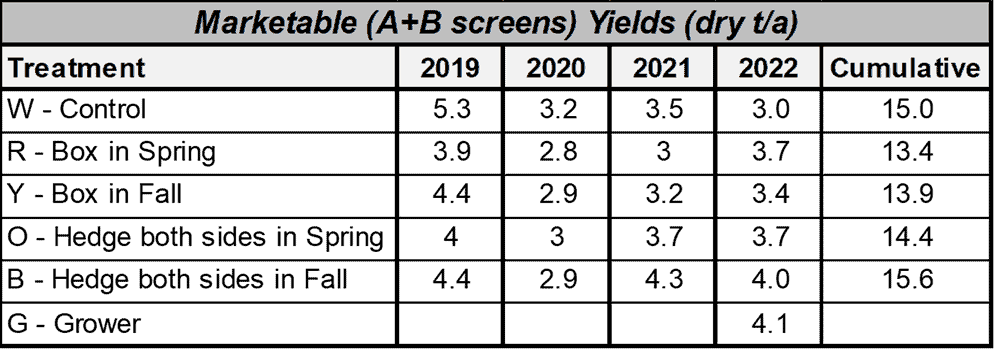 Table 2. Yearly percent marketable fruit for the various mechanical hedging treatments.
Table 2. Yearly percent marketable fruit for the various mechanical hedging treatments.
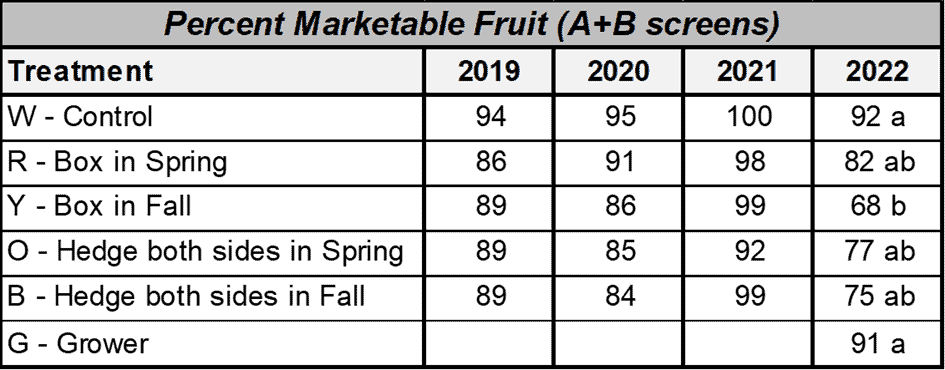 Figure 1. 2022 bloom density scores. Plots were rated visually on a scale of 1-5, where 1 = very few blooms and 5 = extremely profuse blooms.
Figure 1. 2022 bloom density scores. Plots were rated visually on a scale of 1-5, where 1 = very few blooms and 5 = extremely profuse blooms.
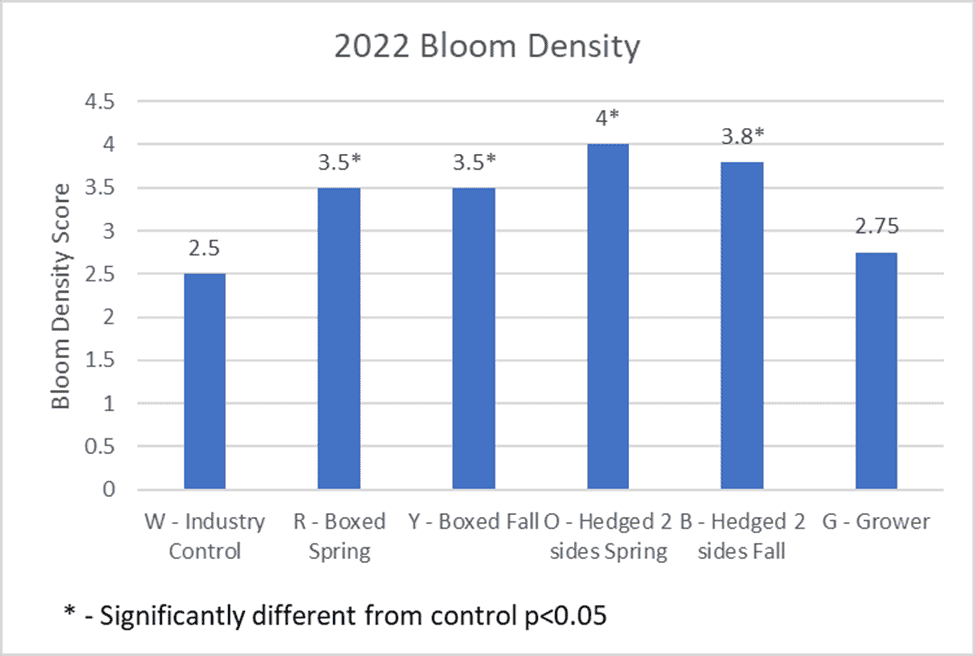
Source for the following data: Pages 68-69 of FUNGICIDES, BACTERICIDES, BIOCONTROLS, AND NATURAL PRODUCTS FOR DECIDUOUS TREE FRUIT AND NUT, CITRUS, STRAWBERRY, AND VINE CROPS IN CALIFORNIA, 2022.
Download the entire document (free) at: https://ipm.ucanr.edu/agriculture

 Want more information from the UCCE team? Subscribe to their newsletters here!
Want more information from the UCCE team? Subscribe to their newsletters here!
What’s behind your assessment?
The CPB Annual Report is an easy way to see the value of the assessment through the programs that CPB funds. Copies of the 2021/2022 Annual Report have been mailed to the industry but if you prefer an electronic version, click the link below.
CDFA Flood Recovery Resources
The California Department of Food and Agriculture has developed a new webpage providing links to flood recovery resources available from state and federal partners.
Upcoming Events
Annual UCCE South Sacramento Valley Prune Meeting
February 22, 2023 | 8 am-12:30 pm
Sutter Co. Ag Dept. Meeting Room – 142 Garden Hwy, Yuba City
No registration is required | See Full Agenda
Tehama Prune Day (N. Sacramento Valley)
February 23, 2023 | 7:30 am-1 pm
Red Bluff Elks Lodge — 355 Gilmore Rd, Red Bluff
Registration and Agenda Details Here
March CPB Board Meeting
March 22, 2023 | 10 am-12 pm
Farm Bureau Centennial Room — 2600 River Plaza Dr., Sacramento
Prune Summit
March 23, 2023 | Check-In at 8 am
Orchard Creek Lodge — 965 Orchard Creek Lane, Lincoln, CA
Sac Valley Prune Field Tours
April 12-13, 2023
See all 2023 Meetings & Events
PRUNES IN THE NEWS
7 Top Health Benefits of Prunes, According to Registered Dietitians
3 Antioxidant-Rich Recipes Packed with Cardamom, a Delicious Spice Known To Help Fight Inflammation
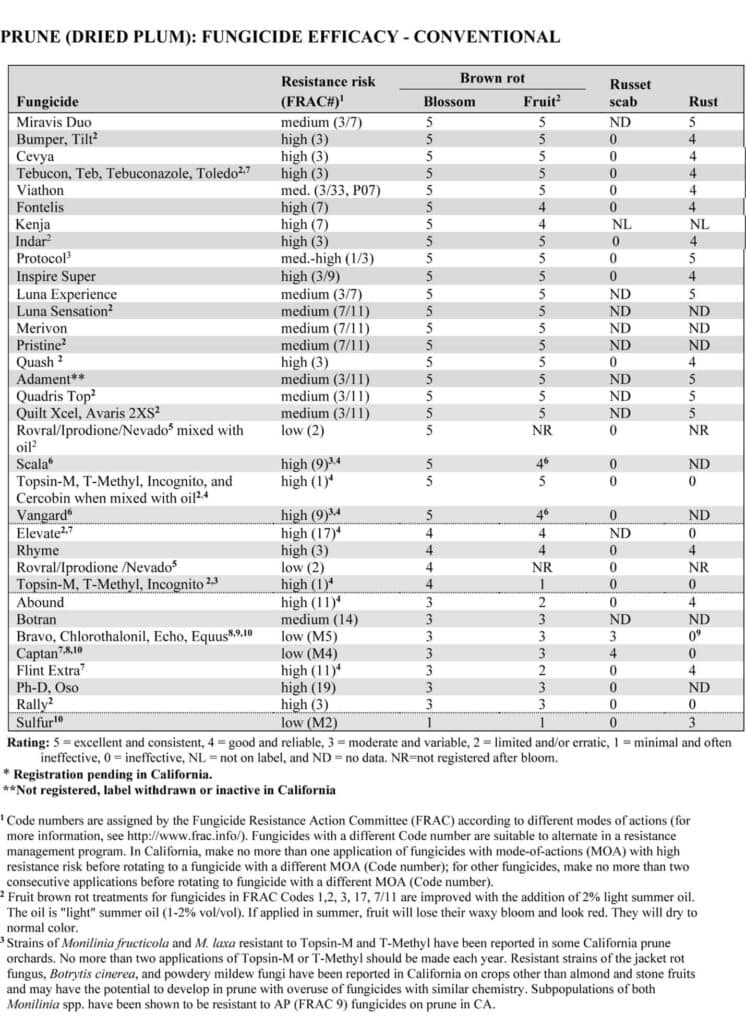
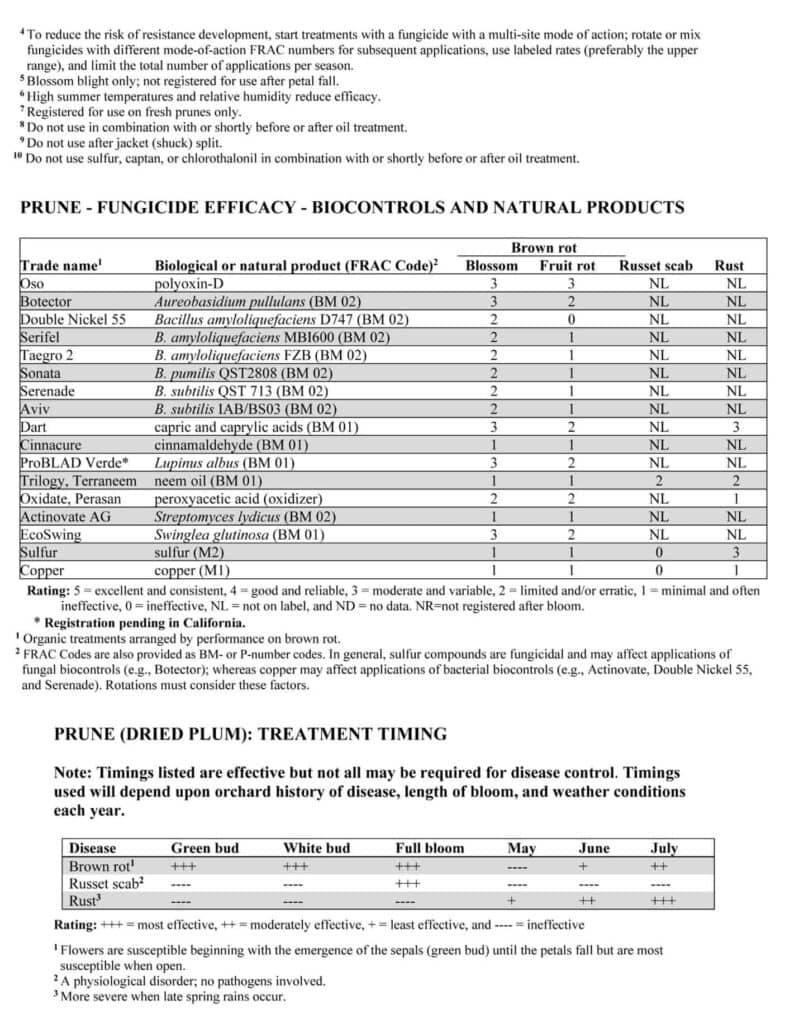 Want more information from the UCCE team? Subscribe to their newsletters
Want more information from the UCCE team? Subscribe to their newsletters 
 Keep Up with Prune News
Keep Up with Prune News